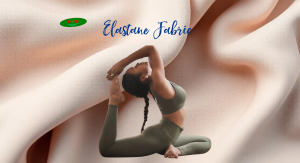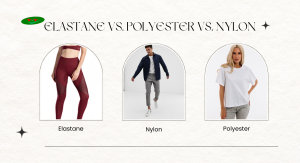In the dynamic world of textile manufacturing, covered spandex yarn stands as a revolutionary material that has transformed the way we think about fabric flexibility and durability. This innovative yarn combines the exceptional elasticity of spandex with the protective covering of various textile fibers, creating a versatile product that meets the demanding requirements of modern textile applications. The unique properties of covered spandex yarn have made it an indispensable component in producing high-performance fabrics that offer both comfort and functionality.
Covered spandex yarn
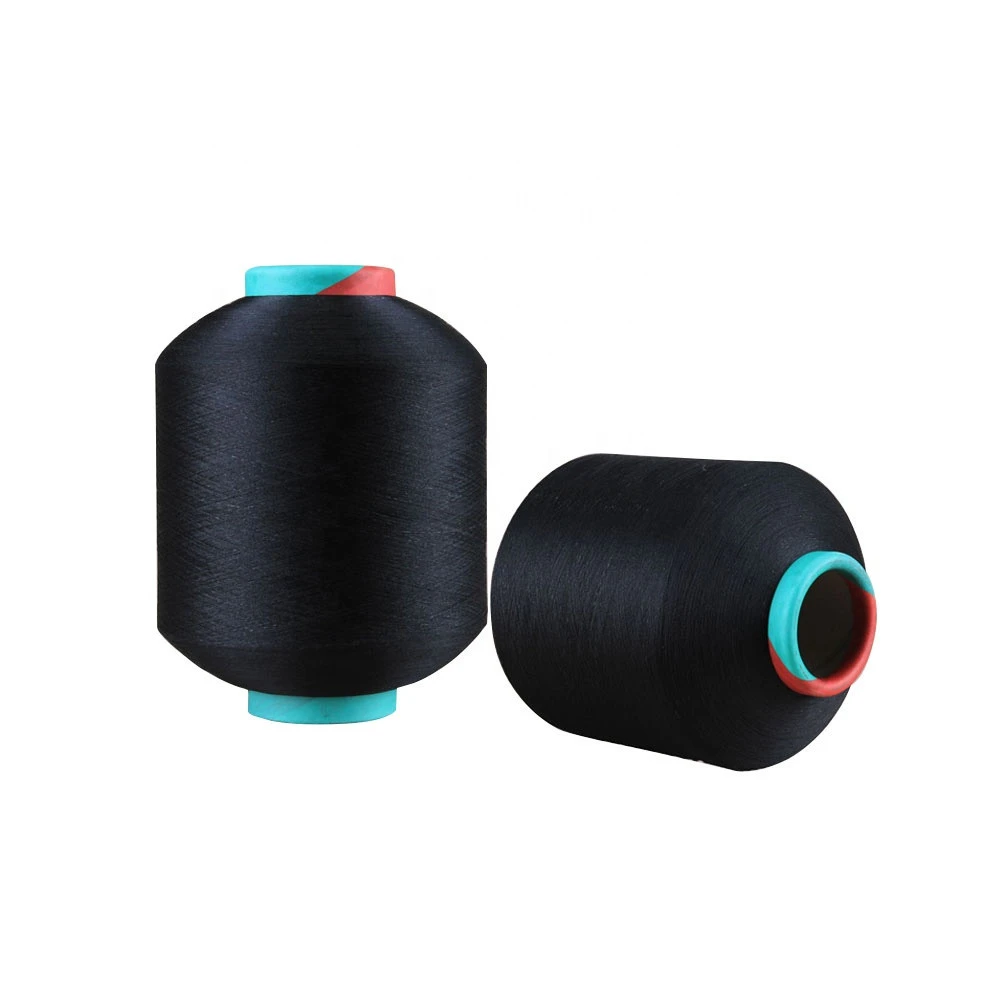
Covered spandex yarn represents a significant advancement in textile technology, combining the remarkable elasticity of spandex with a protective outer layer of various fiber materials. This innovative combination creates a yarn that maintains its elastic properties while gaining additional strength and durability from its covering material. The manufacturing process involves carefully wrapping a spandex core with one or more layers of covering fibers, resulting in a versatile product that meets diverse textile applications’ demands.
Manufacturing Process and Techniques
The production of covered spandex yarn involves a sophisticated process that begins with selecting high-quality spandex filaments as the core material. These filaments are carefully fed through specialized covering machines, where they are precisely wrapped with covering fibers using either single or double covering techniques. The covering process requires precise tension control and speed synchronization to ensure uniform coverage and optimal performance characteristics.
The manufacturing environment must maintain strict temperature and humidity controls to prevent irregularities in the covering process. Advanced sensors and monitoring systems continuously track various parameters to ensure consistent quality throughout production. This attention to detail results in covered spandex yarn with superior uniformity and performance characteristics.
Modern manufacturing facilities employ automated systems that can adjust covering parameters in real-time, responding to variations in raw materials and environmental conditions. This level of control ensures that the final product meets exact specifications for different end-use applications.
Quality Control and Testing Methods
Quality control in covered spandex yarn production encompasses multiple testing stages, from raw material evaluation to finished product assessment. Key parameters such as covering uniformity, elasticity retention, and dimensional stability undergo rigorous testing using specialized equipment and standardized procedures.
Physical testing includes measurements of elongation, recovery rate, and breaking strength. These tests simulate real-world conditions to ensure the yarn performs consistently in finished products. Chemical testing evaluates the yarn’s resistance to various environmental factors, including UV exposure, washing, and chemical treatments.
Advanced imaging systems and computerized analysis tools help identify any inconsistencies in covering uniformity or structural defects that might affect performance. This comprehensive quality control system ensures that only yarn meeting strict specifications reaches the market.
Applications and End Uses
Covered spandex yarn finds extensive application across various textile sectors, particularly in performance wear and technical textiles. The fashion industry relies heavily on this material for creating form-fitting garments that combine style with comfort.
Athletic wear manufacturers utilize covered spandex yarn in compression garments and high-performance sportswear, where moisture management and freedom of movement are crucial. The medical textile sector incorporates this yarn in compression bandages and therapeutic garments, benefiting from its controlled elasticity and durability.
The automotive and aerospace industries also employ covered spandex yarn in specialized applications where consistent performance under varying conditions is essential. Its ability to maintain shape and elasticity makes it ideal for seat covers, interior trim, and other technical applications.
Air covered spandex yarn
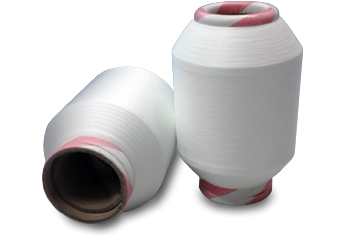
Air covered spandex yarn represents an innovative advancement in textile technology, utilizing compressed air to create a unique covering process that differs significantly from traditional mechanical covering methods. This specialized technique produces yarn with exceptional characteristics, including enhanced bulk, improved comfort, and superior stretch recovery properties. The air covering process allows for greater versatility in creating yarns with varying characteristics to meet specific end-use requirements.
Production Technology and Innovations
Air covering technology employs high-velocity air streams to wrap covering fibers around the spandex core, creating a distinctive structure that differs from conventional covered yarns. The process involves carefully controlled air jets that guide the covering fibers while maintaining precise tension on the spandex core.
Modern air covering machines incorporate sophisticated electronic controls that allow for precise adjustment of air pressure, yarn tension, and production speed. These parameters significantly influence the final yarn characteristics and can be modified to achieve specific performance requirements.
Recent technological innovations have introduced smart sensors and artificial intelligence systems that optimize the air covering process in real-time, ensuring consistent quality while maximizing production efficiency. These advancements have made it possible to produce air covered spandex yarn with unprecedented uniformity and performance characteristics.
Performance Characteristics
Air covered spandex yarn exhibits unique performance characteristics that set it apart from other elastic yarns. The air covering process creates a softer, more voluminous structure that contributes to enhanced fabric comfort and improved moisture management properties.
The unique construction of air covered yarn results in superior stretch and recovery characteristics, making it particularly suitable for applications requiring high performance under repeated strain. The air-textured covering provides better protection for the spandex core while maintaining excellent elasticity.
Durability testing has shown that air covered spandex yarn maintains its performance characteristics even after numerous wash cycles and extended wear, making it an ideal choice for long-lasting garments and technical applications.
Market Trends and Future Developments
The market for air covered spandex yarn continues to expand as manufacturers discover new applications and end-users recognize its unique benefits. The athleisure and performance wear segments have particularly embraced this technology, driving innovation and development in the field.
Research and development efforts are focused on creating new variants of air covered spandex yarn that offer enhanced sustainability features, including the use of recycled materials and bio-based alternatives. These developments align with growing market demand for environmentally responsible textile products.
Industry experts predict continued growth in the air covered spandex yarn sector, with emerging applications in technical textiles and smart fabrics driving future innovations. The development of new covering materials and processing techniques promises to further expand the possibilities for this versatile yarn type.
Covered elastic yarn
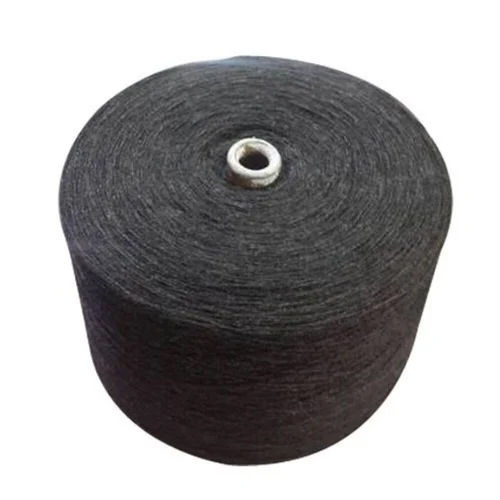
Covered elastic yarn encompasses a broader category of elastic yarns where various elastic cores are wrapped with different covering materials. This versatile category includes not only spandex-based products but also other elastic materials, offering a wide range of options for different textile applications. The variety of covering materials and techniques available allows manufacturers to create yarns with specific characteristics tailored to end-use requirements.
Material Selection and Compatibility
The selection of materials for covered elastic yarn involves careful consideration of both core and covering components. The elastic core material must provide the desired stretch and recovery properties, while the covering material needs to complement these characteristics while adding its own beneficial properties.
Compatibility between core and covering materials is crucial for producing high-quality covered elastic yarn. Factors such as thermal properties, chemical resistance, and processing requirements must be carefully evaluated to ensure optimal performance of the final product.
Modern material science continues to introduce new options for both core and covering materials, expanding the possibilities for creating specialized covered elastic yarns. These developments have led to improved performance characteristics and opened new applications in various industries.
Processing Methods and Parameters
The processing of covered elastic yarn requires precise control of numerous parameters to achieve desired characteristics. Temperature, tension, and speed must be carefully balanced throughout the covering process to ensure uniform coverage and optimal performance.
Different covering techniques, including single covering, double covering, and compound covering, offer various advantages depending on the intended application. Each method requires specific processing parameters and equipment configurations to achieve optimal results.
Advanced process control systems monitor and adjust these parameters in real-time, ensuring consistent quality and reducing waste during production. This level of control has become increasingly important as market demands for high-performance covered elastic yarns continue to grow.
Product Development and Innovation
Innovation in covered elastic yarn development focuses on creating products with enhanced performance characteristics and improved sustainability profiles. Research efforts are directed toward developing new material combinations and processing techniques that offer unique benefits.
The integration of smart technologies and functional additives has led to the development of covered elastic yarns with enhanced properties such as antimicrobial protection, temperature regulation, and moisture management. These innovations have expanded the potential applications for covered elastic yarns.
Continuous collaboration between material scientists, equipment manufacturers, and end-users drives the evolution of covered elastic yarn technology, resulting in products that better meet market needs while addressing environmental concerns.
[Continued in next part due to length…]
Sustainability Considerations
The textile industry faces increasing scrutiny concerning its environmental impact, and covered elastic yarn production is no exception. Efforts to enhance sustainability in this sector are gaining momentum, urging manufacturers to explore eco-friendly materials and processes.
Using recycled fibers for both core and covering components has emerged as a significant trend. By utilizing post-consumer or post-industrial waste, companies can reduce the demand for virgin materials, ultimately minimizing their carbon footprint. Innovations surrounding biodegradable fibers are also being researched, providing an avenue for sustainable development that aligns with eco-conscious consumer demands.
Additionally, there’s growing momentum toward using lower-impact finishing processes that reduce water usage, chemical application, and energy consumption during manufacturing. This holistic shift not only benefits the environment but also supports brands that seek to align themselves with socially responsible practices, thereby boosting their market appeal.
Polyester covered spandex yarn
Polyester covered spandex yarn combines the elasticity of spandex with the durability and moisture-wicking properties offered by polyester. This blend creates a unique product ideal for applications where stretch, comfort, and resilience are paramount. The collaboration of both fibers results in enhanced performance without compromising on feel or wearability.
Composition and Functionality
Identifying the right composition for polyester covered spandex yarn requires a delicate balance between the two materials. Spandex serves as the elastic core, offering superior stretch and recovery, while polyester envelops this core, lending strength and moisture management capabilities.
The physical integration of these materials creates a synergistic effect — combining the lightweight nature of polyester with the inherent stretchiness of spandex. As a result, fabrics made from this yarn can conform beautifully to the human form, enabling freedom of movement and providing all-day comfort for garments such as activewear, athleisure, and swimwear.
Understanding the properties of each material paves the way for optimizing blends tailored to particular uses. For instance, increasing the percentage of polyester can yield increased durability, while higher spandex content may enhance elasticity, leading manufacturers to fine-tune their compositions accordingly.
Performance Benefits
The performance characteristics of polyester covered spandex yarn make it a favored choice among designers and manufacturers in various domains. The combination yields not only excellent stretch but also impressive recovery, meaning that garments retain their shape even after extensive wear and washing.
Moreover, moisture management properties inherent to polyester help facilitate ventilation and wick away sweat, making this yarn particularly useful for sports and leisure apparel. Its ability to minimize chafing and maximize comfort under strain adds to the overall versatility of polyester covered spandex yarn.
In addition to those functional attributes, the yarn exhibits remarkable durability, ensuring garments withstand not just wear but also laundering. High resistance to fading and shrinking means clothing retains its aesthetics over time, presenting a long-term value for consumers who desire quality paired with functionality.
Market Dynamics
The increasing popularity of wellness-focused lifestyles significantly impacts the growth of polyester covered spandex yarn within the apparel industry. As more individuals embrace fitness and outdoor activities, there’s been a substantial uptick in demand for comfortable, high-performance clothing.
Furthermore, the customization options available with this type of yarn allow brands to cater to diverse preferences and functional requirements, driving innovation in fabric technology. Market leaders continue to experiment with new blends, finishes, and styles that reflect contemporary design themes.
Alongside aesthetic choices, there is an expanding awareness within the industry of environmentally sound practices. Consumers today are not just interested in performance; they are also progressing towards ethical purchasing decisions, prompting brands to explore sustainable sourcing for their fibers, including recycled polyester variants.
What is spandex yarn
Spandex yarn, often referred to by its brand name Lycra, is a synthetic fiber known for its exceptional elasticity. Invented in the late 1950s, this versatile material revolutionized the textile world by allowing for the creation of stretchable fabrics. Spandex became prominent in various sectors, including fashion, sportswear, and medical textiles, reshaping the design possibilities across multiple applications.
Characteristics of Spandex Yarn
The defining characteristic of spandex yarn is its ability to stretch up to several times its original length and then return to its original shape. This property is invaluable in creating textiles that require flexibility, form-fitting designs, or durability under stress.
Beyond mere stretch, spandex yarn is also renowned for its resistance to deterioration caused by sweat, oils, and UV light. These qualities make it ideally suited for athletic and swimwear applications, increasing its appeal to manufacturers concerned about longevity.
Moreover, spandex yarn offers a soft handfeel, contributing to overall comfort for the wearer. This heightened comfort, paired with its stretch, puts spandex at the forefront of modern fashion, particularly in categories focused on body contouring and performance.
Applications Across Industries
The application spectrum of spandex yarn is vast and varied, stretching beyond casual wear into occupational attire, medical uniforms, and specialized industrial textiles. In activewear, for example, spandex works harmoniously with other fibers to create leggings, tops, and shorts designed to facilitate ease of movement while maintaining structure.
Fashion-forward designers have embraced spandex yarn almost universally. Whether through fitted dresses, tailored office attire, or figure-hugging denim, the inclusion of spandex elevates garment performance while adhering to contemporary style trends.
Furthermore, the healthcare sector utilizes spandex yarn extensively. Compression garments, such as hosiery and orthopedic supports, benefit from spandex’s unique properties, helping improve circulation and support muscle structures without sacrificing comfort.
Future Prospects
As industries continue to evolve, so too does the role of spandex yarn. Future advancements in this field focus on improving sustainability, with researchers exploring bioplastics and other eco-friendly alternatives to traditional materials. This exploration reflects an ongoing commitment to both performance excellence and environmental responsibility.
In addition, smart textiles equipped with integrated spandex yarn are on the horizon, signifying a move towards high-tech solutions in fields ranging from sports to medical applications. The convergence of textiles and technology unveils endless opportunities, suggesting that the future will be characterized by even greater innovation in spandex use.
Difference between polyester and spandex
Understanding the fundamental differences between polyester and spandex is crucial for anyone involved in textile and fashion production. While both fibers are synthetic, they serve markedly different purposes and exhibit unique properties that cater to distinct applications.
Chemical Composition
Polyester is a term that refers to a group of synthetic fibers derived from petroleum-based products. It’s constructed through a process called polymerization, which links monomers into long, stable chains. This robust structure lends polyester its characteristic durability and resistance to wrinkling and fading.
In contrast, spandex’s chemical makeup focuses on providing excellent elastic properties, credited to its unique polymer structure. Made from a segmented polyurethane, spandex’s molecular configuration enables it to stretch aggressively and recover effortlessly, making it a prime component for stretchable fabrics.
Functional Attributes
While the specific functionalities of polyester and spandex differ, their complementary natures allow them to work in harmony when blended together. Polyester’s strength and moisture-wicking capabilities contribute significantly to fabric performance, preventing dampness and promoting breathability.
Conversely, spandex introduces elasticity. When paired with polyester, spandex-enriched blends result in fabrics that dramatically enhance wearer comfort while maintaining structural integrity. Garments aim to move with the body rather than restrict it, ensuring unparalleled satisfaction for the user.
This synergy becomes increasingly important in activewear but is also vital in everyday fashion, ensuring comfort remains at the forefront without compromising durability or aesthetic appeal.
Market Trends in Fiber Selection
Today’s consumers aim for a more informed purchasing decision, prioritizing performance, comfort, and sustainability. Such desires lead to a rise in blended fabrics that marry the strengths of both polyester and spandex.
Brands that effectively communicate their understanding of fiber properties stand to gain market advantages. By leveraging polyester for resilient bases while implementing spandex for sheer elasticity, companies appeal directly to the needs of active customers who seek high-performance products.
Concerns regarding environmental impact further influence how both fibres are perceived in the marketplace. Brands continuously innovate, researching new sustainable sourcing options to ensure green practices while delivering technically superior products.
Conclusion
In the ever-evolving landscape of textile technology, covered spandex yarn, air-covered spandex yarn, covered elastic yarn, and polyester covered spandex yarn hold transformative power. Each of these innovations showcases the intricate interplay of material science and design, reflecting society’s shifting preferences toward comfort, functionality, and sustainability. Understanding the nuances of these yarns not only enhances our appreciation of textiles but also equips us to navigate the complexities of the modern apparel industry, paving the way for exciting future developments and smarter, responsible choices in our wardrobe selections.
Support by us


